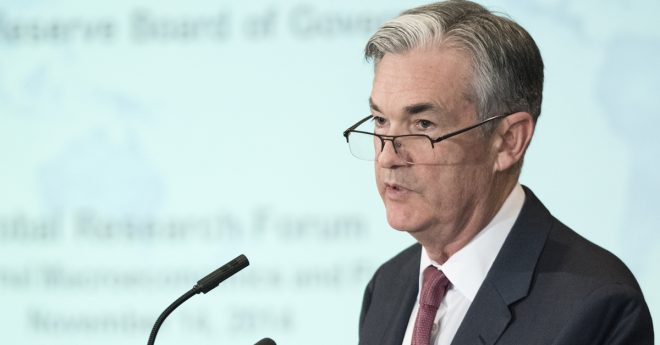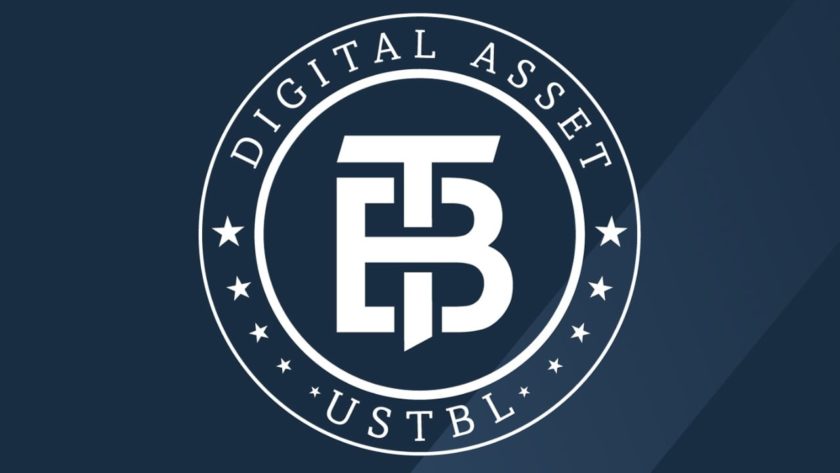U.S. stocks continue to reel over coronavirus-related fears, and investors are increasingly betting the Federal Reserve will slash interest rates to stabilize the economy and markets.
But whether those investors turn to bitcoin (BTC) as a crisis hedge remains to be seen.
Such action by the Fed could, in theory, help bitcoin prices since lower rates would likely reduce the appeal of income-yielding assets such as U.S. Treasury bonds, according to analysts tracking the 11-year-old cryptocurrency. So far, the Fed has not said whether it would cut rates, with Chair Jerome Powell taking a “wait and watch” attitude.
Yields on 10-year U.S. Treasury notes slid by 0.15 percentage point to a new record low of 1.14 percent, indicating heightened demand; bond prices move in the opposite direction of yields. Rates also fell on government bonds from the U.K. Those from Germany and Japan fell further into negative territory.
“As interest rates decline, you’re more likely to tip the seesaw toward assets that don’t have yield, such as collectible assets like artwork or gold or bitcoin,” said Greg Cipolaro, co-founder of Digital Asset Research, a New York-based cryptocurrency analysis firm.
Bitcoin prices are down 14 percent since Sunday, on track for their worst weekly performance since mid-November. The cryptocurrency slid 2.9 percent on Friday to $8,573, the lowest in a month.
Analysts and traders in the nascent market have debated whether bitcoin should trade as a hedge against malaise in traditional markets, or if it’s more vulnerable to a sell-off alongside riskier assets like stocks and emerging-market currencies when the global economic and market outlooks darken. Some investors say bitcoin is mostly uncorrelated with other asset categories, sometimes trading in sync with stocks and other times in opposition.
Bitcoin was launched by its pseudonymous creator Satoshi Nakamoto in early 2009, in the wake of the last financial crisis, so the cryptocurrency is largely untested in a market meltdown like the coronavirus-triggered panic selling now roiling stocks.
Haven Bet vs. Halving Bet
As a feature of the currency’s original design, the pace of new supplies of bitcoin issued to the decentralized network gets cut in half every four years. The next such event — known as the halving — is expected to take place in May.
That automatic supply tightening, encoded in the software, differentiates bitcoin sharply from human-led monetary-policy easing by central banks such as the U.S. Federal Reserve. The cryptocurrency’s price jumped 94 percent last year, roughly triple the gains in U.S. stocks; despite this week’s pullback, bitcoin is still up about 19 percent so far in 2020.
For now, the bitcoin market might be too immature for large investors with diversified asset portfolios to use as a hedge against a financial crisis. Indeed, bitcoin’s price drop in recent days — gold has slid, too — might signal most investors are still scrambling into cash when there’s a big market sell-off.
“We see a lot of these global actions having some impact on bitcoin, but there’s also things that are happening in the bitcoin network, and that could have a larger impact than the Fed cutting interest rates,” says Joe DiPasquale, founder of the cryptocurrency-focused hedge fund BitBull Capital in San Francisco. “I’m still bullish for bitcoin for the year, and a major reason is the halving.”
The Fed’s Next Move
The World Health Organization raised its risk assessment of the coronavirus to “very high” from “high,” with Italy now expected to approve emergency measures and quarantines and event cancellations reported in Germany and Switzerland, according to Bloomberg News. Acting White House Chief of Staff Mick Mulvaney has warned of possible school closings in the U.S.
The Standard & Poor’s 500 Index is down 12.5 percent over the past seven days, putting the gauge on track for its worst weekly performance since the 2008 crisis.
That’s why investors are betting the Federal Reserve will make a move to help stanch the red ink. According to the Chicago Mercantile Exchange, futures contracts used to bet on the Fed’s benchmark interest rate have shifted in the past two days to incorporate the near-certainty of a cut by the time of the central bank’s next regular monetary-policy meeting, scheduled for March 18. Just a week ago, most traders were expecting no change.
There’s also now a greater than 50 percent chance the Fed will cut rates by at least a full percentage point by December, from the current range of between 1.5 percent and 1.75 percent.
U.S. stocks pared losses on Friday after Fed Chair Jerome Powell said in a mid-day statement the central bank was “closely monitoring developments” related to the coronavirus “and their implications for the economic outlook.”
“We will use our tools and act as appropriate to support the economy,” Powell said.
While rate cuts might ultimately prompt bigger allocations to bitcoin, investors in crypto and traditional markets could be so gripped right now by a crisis mentality that they’re indiscriminately selling all assets perceived as risky. Since cryptocurrencies are relatively new and their prices can be extremely volatile, bitcoin is still generally perceived as a risky asset, Cipolaro said.
“Usually in the early stages of a crisis, you’re worried about deflation, not inflation,” he said.
Disclosure Read More
The leader in blockchain news, CoinDesk is a media outlet that strives for the highest journalistic standards and abides by a strict set of editorial policies. CoinDesk is an independent operating subsidiary of Digital Currency Group, which invests in cryptocurrencies and blockchain startups.




